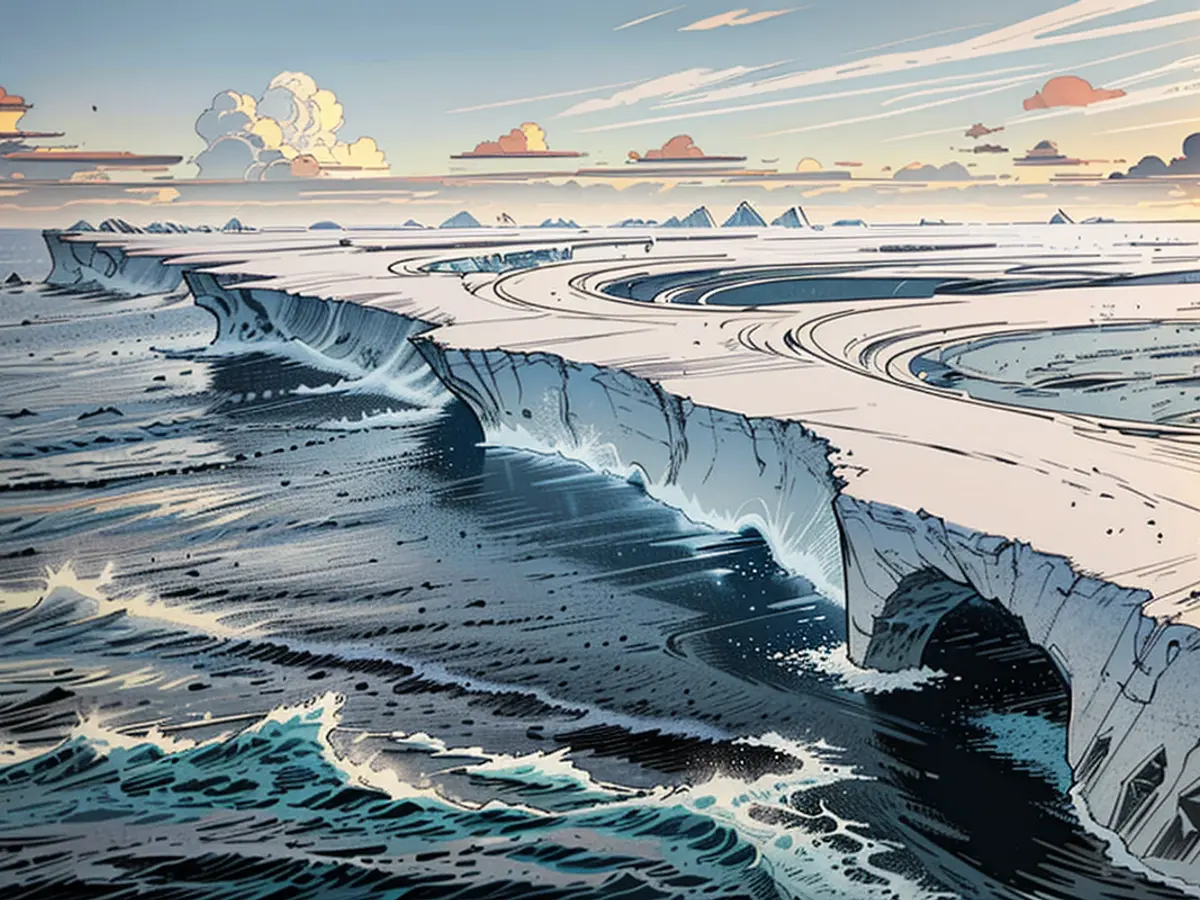The world's largest iceberg is stuck
In 1986, a colossal iceberg broke off in Antarctica. For decades, it remained stuck due to its size before freely drifting through the Southern Ocean. Now, it's stuck in a current and could remain there for years without melting.
The current largest iceberg in the world appears to be stuck in a massive water vortex above an underwater mountain. The A23a, named after its size, has been spinning in the Southern Ocean for months, as seen in satellite images. Experts suggest that the iceberg might be trapped in the so-called Taylor Column - a current that forms around underwater mountains - for years.
This prevents the colossus from being carried by ocean currents to warmer regions where it would melt faster. "A23a is the iceberg that just won't die," BBC quoted polar expert Mark Brandon from the Open University.
A23a broke off from the Filchner-Ronne Ice Shelf in Antarctica in 1986 but remained stuck to the seafloor for decades. After breaking off in 2000, it briefly picked up speed - only to remain stationary again.
Near the South Orkney Islands northeast of the Antarctic Peninsula, A23a rotates clockwise about 15 degrees daily, as reported by the British Antarctic Survey on the X platform. It takes A23a about 24 days to complete a full rotation.
Icebergs as large as islands or metropolises
The iceberg is about 4,000 square kilometers in size, larger than the Spanish holiday island of Mallorca, and extends hundreds of meters below the surface. Waves and weather have carved out massive arches and cavernous depressions in the colossus, as shown in images taken by a ship from Eyos Expeditions in mid-January.
Usually, icebergs from the so-called Weddell sector of the European Space Agency end up in the South Atlantic and melt away. This happened to the A76, which broke off from the Filchner-Ronne Ice Shelf in 2021 and was about 4,320 square kilometers, or five times the size of Berlin, but eventually melted away last year.
Despite its size, comparable to Mallorca, the Spanish holiday island, A23a remains trapped in a current, potentially persisting for years. This prolonged stasis in the Southern Ocean is a stark contrast to other icebergs, such as the A76, which eventually melts away after being swept towards warmer regions.







